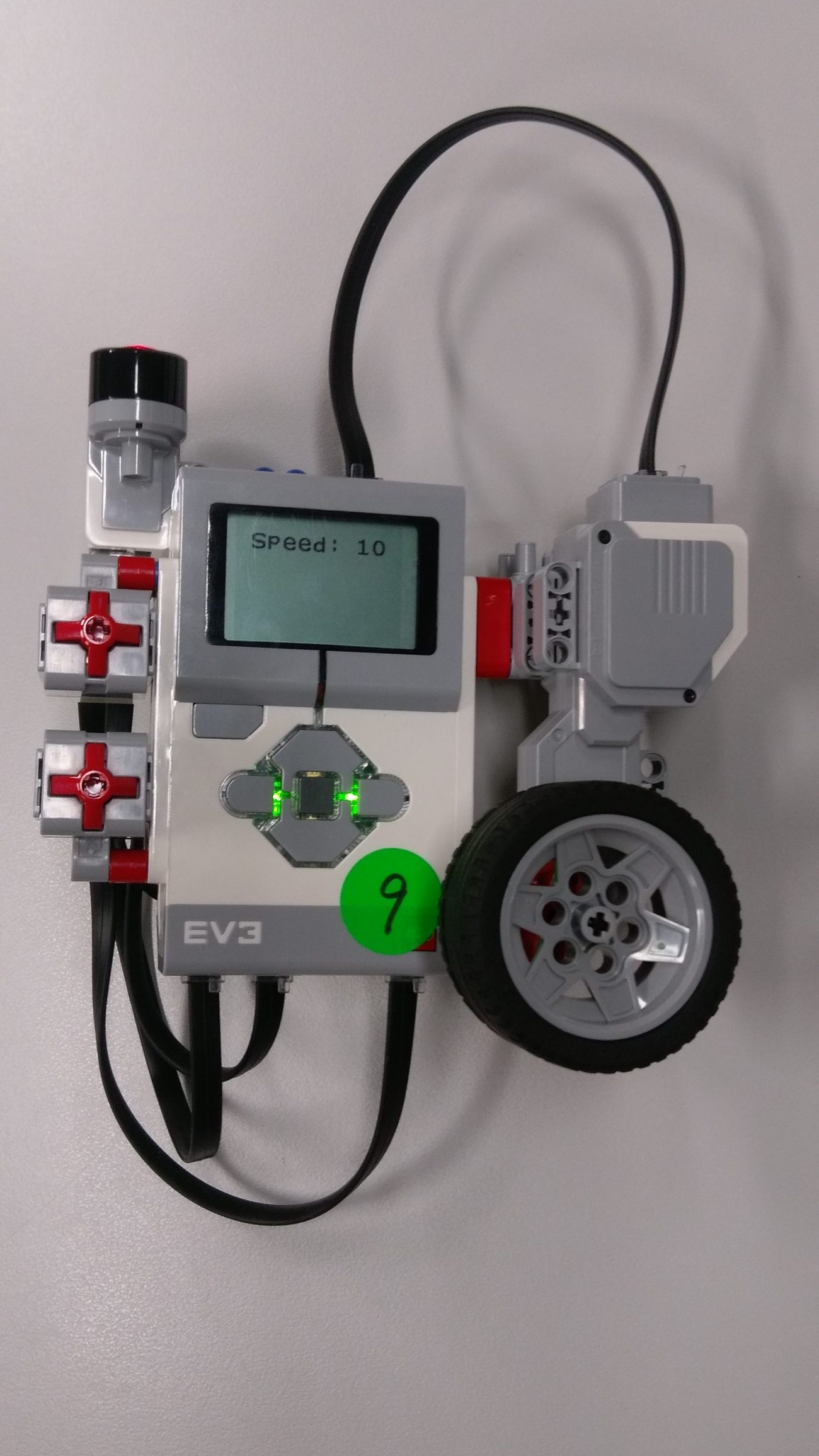
Our haptics project is a remote controlled robot vehicle, with a built-in timer, put into an obstacle course for people to race around.
The robot and the controller are connected via Bluetooth. The robot uses light sensors so that it does not fall of the table or go over the boundary lines. The controller uses touch sensors to increase and decrease speed. We used haptics in the steering so that people cannot over steer. Detects finish line with an infrared sensor and stops the timer and cuts controls.
We chose to do an obstacle course because we wanted to do a spin on the classic remote control car. The obstacles are because we wanted to make the game difficult. Most of the obstacles were made out of Lego because we wanted to incorporate it as much as possible.
We learned that our robot was hard to control when the speed was greater then 20. We also learned that there are better options then touch sensors for changing speed.
The obstacle course was good and worked well. The only component that did not work where the spinning blades on the front of the robot.
We would modify the controller so that it is easier to use. The speed of the robot would also have to be reduced so that more people could finish the course without crashing.


